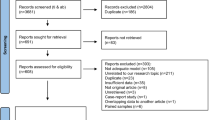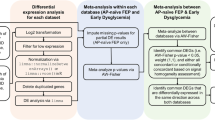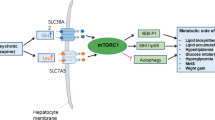Abstract
Although effective in treating an array of neurological disorders, antipsychotics are associated with deleterious metabolic side effects. Through high-throughput screening, we previously identified phenothiazine antipsychotics as modulators of the human insulin promoter. Here, we extended our initial finding to structurally diverse typical and atypical antipsychotics. We then identified the transforming growth factor beta (TGFβ) pathway as being involved in the effect of antipsychotics on the insulin promoter, finding that antipsychotics activated SMAD3, a downstream effector of the TGFβ pathway, through a receptor distinct from the TGFβ receptor family and known neurotransmitter receptor targets of antipsychotics. Of note, antipsychotics that do not cause metabolic side effects did not activate SMAD3. In vivo relevance was demonstrated by reanalysis of gene expression data from human brains treated with antipsychotics, which showed altered expression of SMAD3 responsive genes. This work raises the possibility that antipsychotics could be designed that retain beneficial CNS activity while lacking deleterious metabolic side effects.
This is a preview of subscription content, access via your institution
Access options
Subscribe to this journal
Receive 12 print issues and online access
$259.00 per year
only $21.58 per issue
Buy this article
- Purchase on Springer Link
- Instant access to full article PDF
Prices may be subject to local taxes which are calculated during checkout





Similar content being viewed by others
References
Alexander GC, Gallagher SA, Mascola A, Moloney RM, Stafford RS . Increasing off-label use of antipsychotic medications in the United States, 1995-2008. Pharmacoepidemiol Drug Saf 2011; 20: 177–184.
Ostbye T, Curtis LH, Masselink LE, Hutchison S, Wright A, Dans PE et al. Atypical antipsychotic drugs and diabetes mellitus in a large outpatient population: a retrospective cohort study. Pharmacoepidemiol Drug Saf 2005; 14: 407–415.
Citrome LL, Holt RI, Zachry WM, Clewell JD, Orth PA, Karagianis JL et al. Risk of treatment-emergent diabetes mellitus in patients receiving antipsychotics. Ann Pharmacother 2007; 41: 1593–1603.
Nasrallah H . Atypical antipsychotic-induced metabolic side effects: insights from receptor-binding profiles. Mol Psychiatry 2008; 13: 27–35.
Tonnard-Neumann E . Phenothiazines and diabetes in hospitalized women. Am J Pychiatry 1968; 124: 978–982.
Dixon L, Weiden P, Delahanty J, Goldberg R, Postrado L, Lucksted A et al. Prevalence and correlates of diabetes in national schizophrenia samples. Schizophr Bull 2000; 26: 903–912.
Baptista T, de Baptista EA, Lalonde J, Plamondon J, Kin NM, Beaulieu S et al. Comparative effects of the antipsychotics sulpiride and risperidone in female rats on energy balance, body composition, fat morphology and macronutrient selection. Prog Neuropsychopharmacol Biol Psychiatry 2004; 28: 1305–1311.
Starrenburg FC, Bogers JP . How can antipsychotics cause Diabetes Mellitus? Insights based on receptor-binding profiles, humoral factors and transporter proteins. Eur Psychiatry 2009; 24: 164–170.
Baptista T, De Mendoza S, Beaulieu S, Bermudez A, Martinez M . The metabolic syndrome during atypical antipsychotic drug treatment: mechanisms and management. Metab Syndr Relat Disord 2004; 2: 290–307.
Kiselyuk A, Farber-Katz S, Cohen T, Lee SH, Geron I, Azimi B et al. Phenothiazine neuroleptics signal to the human insulin promoter as revealed by a novel high-throughput screen. J Biomol Screen 2010; 15: 663–670.
Mudge J, Miller NA, Khrebtukova I, Lindquist IE, May GD, Huntley JJ et al. Genomic convergence analysis of schizophrenia: mRNA sequencing reveals altered synaptic vesicular transport in post-mortem cerebellum. PLoS One 2008; 3: e3625.
Narayan S, Tang B, Head SR, Gilmartin TJ, Sutcliffe JG, Dean B et al. Molecular profiles of schizophrenia in the CNS at different stages of illness. Brain Res 2008; 1239: 235–248.
Azar ST, Salti I, Zantout MS, Major S . Alterations in plasma transforming growth factor beta in normoalbuminuric type 1 and type 2 diabetic patients. J Clin Endocrinol Metab 2000; 85: 4680–4682.
Smart NG, Apelqvist AA, Gu X, Harmon EB, Topper JN, MacDonald RJ et al. Conditional expression of Smad7 in pancreatic beta cells disrupts TGF-beta signaling and induces reversible diabetes mellitus. PLoS Biol 2006; 4: e39.
Watanabe R, Shen ZP, Tsuda K, Yamada Y . Insulin gene is a target in activin receptor-like kinase 7 signaling pathway in pancreatic beta-cells. Biochem Biophys Res Commun 2008; 377: 867–872.
Herder C, Zierer A, Koenig W, Roden M, Meisinger C, Thorand B . Transforming growth factor-beta1 and incident type 2 diabetes: results from the MONICA/KORA case-cohort study, 1984-2002. Diabetes Care 2009; 32: 1921–1923.
Tan CK, Leuenberger N, Tan MJ, Yan YW, Chen Y, Kambadur R et al. Smad3 deficiency in mice protects against insulin resistance and obesity induced by a high-fat diet. Diabetes 2011; 60: 464–476.
Lin Y, Nakachi K, Ito Y, Kikuchi S, Tamakoshi A, Yagyu K et al. Variations in serum transforming growth factor-beta1 levels with gender, age and lifestyle factors of healthy Japanese adults. Dis Markers 2009; 27: 23–28.
Lin HM, Lee JH, Yadav H, Kamaraju AK, Liu E, Zhigang D et al. Transforming growth factor-beta/Smad3 signaling regulates insulin gene transcription and pancreatic islet beta-cell function. J Biol Chem 2009; 284: 12246–12257.
Newcomer J . Second-generation (atypical) antipsychotics and metabolic effects: a comprehensive literature review. CNS Drugs 2005; 19 (Suppl 1): 1–93.
Allison DB, Mentore JL, Heo M, Chandler LP, Cappelleri JC, Infante MC et al. Antipsychotic-induced weight gain: a comprehensive research synthesis. Am J Psychiatry 1999; 156: 1686–1696.
Stimmel GL, Gutierrez MA, Lee V . Ziprasidone: an atypical antipsychotic drug for the treatment of schizophrenia. Clin Ther 2002; 24: 21–37.
Correll C . From receptor pharmacology to improved outcomes: individualising the selection, dosing, and switching of antipsychotics. Eur Psychiatry 2010; 25 (Suppl 2): S12–S21.
Horacek J, Bubenikova-Valesova V, Kopecek M, Palenicek T, Dockery C, Mohr P et al. Mechanism of action of atypical antipsychotic drugs and the neurobiology of schizophrenia. CNS Drugs 2006; 20: 389–409.
Satin LS, Kinard TA . Neurotransmitters and their receptors in the islets of Langerhans of the pancreas: what messages do acetylcholine, glutamate, and GABA transmit? Endocrine 1998; 8: 213–223.
Kim H, Toyofuku Y, Lynn FC, Chak E, Uchida T, Mizukami H et al. Serotonin regulates pancreatic beta cell mass during pregnancy. Nat Med 2010; 16: 804–808.
Farkas T, Hoyer-Hansen M, Jaattela M . Identification of novel autophagy regulators by a luciferase-based assay for the kinetics of autophagic flux. Autophagy 2009; 5: 1018–1025.
DaCosta Byfield S, Major C, Laping NJ, Roberts AB . SB-505124 is a selective inhibitor of transforming growth factor-beta type I receptors ALK4, ALK5, and ALK7. Mol Pharmacol 2004; 65: 744–752.
Moustakas A, Heldin CH . The regulation of TGFbeta signal transduction. Development 2009; 136: 3699–3714.
Hoover LL, Kubalak SW . Holding their own: the noncanonical roles of Smad proteins. Sci Signal 2008; 1: pe48.
Zawel L, Dai JL, Buckhaults P, Zhou S, Kinzler KW, Vogelstein B et al. Human Smad3 and Smad4 are sequence-specific transcription activators. Mol Cell 1998; 1: 611–617.
Dennler S, Itoh S, Vivien D, ten Dijke P, Huet S, Gauthier JM . Direct binding of Smad3 and Smad4 to critical TGF beta-inducible elements in the promoter of human plasminogen activator inhibitor-type 1 gene. EMBO J 1998; 17: 3091–3100.
ten Dijke P, Hill CS . New insights into TGF-beta-Smad signalling. Trends Biochem Sci 2004; 29: 265–273.
Brown ML, Schneyer AL . Emerging roles for the TGFbeta family in pancreatic beta-cell homeostasis. Trends Endocrinol Metab 2010; 21: 441–448.
Sayo Y, Hosokawa H, Imachi H, Murao K, Sato M, Wong NC et al. Transforming growth factor beta induction of insulin gene expression is mediated by pancreatic and duodenal homeobox gene-1 in rat insulinoma cells. Eur J Biochem 2000; 267: 971–978.
Kirwan RP, Leonard MO, Murphy M, Clark AF, O'Brien CJ . Transforming growth factor-beta-regulated gene transcription and protein expression in human GFAP-negative lamina cribrosa cells. Glia 2005; 52: 309–324.
Poncelet AC, Schnaper HW, Tan R, Liu Y, Runyan CE . Cell phenotype-specific down-regulation of Smad3 involves decreased gene activation as well as protein degradation. J Biol Chem 2007; 282: 15534–15540.
Watanabe H, Saito H, Nishimura H, Ueda J, Evers BM . Activation of phosphatidylinositol-3 kinase regulates pancreatic duodenal homeobox-1 in duct cells during pancreatic regeneration. Pancreas 2008; 36: 153–159.
Allen RR, Qi L, Higgins PJ . Upstream stimulatory factor regulates E box-dependent PAI-1 transcription in human epidermal keratinocytes. J Cell Physiol 2005; 203: 156–165.
Liu D, Black BL, Derynck R . TGF-beta inhibits muscle differentiation through functional repression of myogenic transcription factors by Smad3. Genes Dev 2001; 15: 2950–2966.
Liu D, Kang JS, Derynck R . 2004 TGF-beta-activated Smad3 represses MEF2-dependent transcription in myogenic differentiation. EMBO J 2004; 23: 1557–1566.
Itkin-Ansari P, Marcora E, Geron I, Tyrberg B, Demeterco C, Hao E et al. NeuroD1 in the endocrine pancreas: Localization and dual function as an activator and repressor. Dev Dyn 2005; 233: 946–953.
Weintraub H, Davis R, Lockshon D, Lassar A . MyoD binds cooperatively to two sites in a target enhancer sequence: occupancy of two sites is required for activation. Proc Natl Acad Sci USA 1990; 87: 5623–5627.
Kupershmidt I, Su QJ, Grewal A, Sundaresh S, Halperin I, Flynn J et al. Ontology-based meta-analysis of global collections of high-throughput public data. PLoS One 2010; 5.
Xie X, Lu J, Kulbokas EJ, Golub TR, Mootha V, Lindblad-Toh K et al. Systematic discovery of regulatory motifs in human promoters and 3′ UTRs by comparison of several mammals. Nature 2005; 434: 338–345.
Matys V, Fricke E, Geffers R, Gossling E, Haubrock M, Hehl R et al. TRANSFAC: transcriptional regulation, from patterns to profiles. Nucleic Acids Res 2003; 31: 374–378.
Chen D, Zhao M, Harris SE, Mi Z . Signal transduction and biological functions of bone morphogenetic proteins. Front Biosci 2004; 9: 349–358.
Lamb J, Crawford ED, Peck D, Modell JW, Blat IC, Wrobel MJ et al. The Connectivity Map: using gene-expression signatures to connect small molecules, genes, and disease. Science 2006; 313: 1929–1935.
Sun Y, Lowther W, Kato K, Bianco C, Kenney N, Strizzi L et al. Notch4 intracellular domain binding to Smad3 and inhibition of the TGF-beta signaling. Oncogene 2005; 24: 5365–5374.
Coccurello R, Moles A . A murine model of atypical antipsychotic-induced weight gain and metabolic dysregulation. Curr Protoc Neurosci 2010 Chapter 9 Unit9 33.
Lambert MT, Copeland LA, Sampson N, Duffy SA . New-onset type-2 diabetes associated with atypical antipsychotic medications. Prog Neuropsychopharmacol Biol Psychiatry 2006; 30: 919–923.
Stahl SM, Mignon L, Meyer JM . Which comes first: atypical antipsychotic treatment or cardiometabolic risk? Acta Psychiatr Scand 2009; 119: 171–179.
Smart NG, Apelqvist AA, Gu X, Harmon EB, Topper JN, MacDonald RJ et al. Conditional expression of Smad7 in pancreatic beta cells disrupts TGF-beta signaling and induces reversible diabetes mellitus. PLoS Biol 2006; 4: e39.
Smith M, Hopkins D, Peveler RC, Holt RI, Woodward M, Ismail K . First- v. second-generation antipsychotics and risk for diabetes in schizophrenia: systematic review and meta-analysis. Br J Psychiatry 2008; 192: 406–411.
Baker RA, Pikalov A, Tran QV, Kremenets T, Arani RB, Doraiswamy PM . Atypical Antipsychotic Drugs and Diabetes Mellitus in the US Food and Drug Administration Adverse Event Database: A Systematic Bayesian Signal Detection Analysis. Psychopharmacol Bull 2009; 42: 11–31.
Kohen D . Diabetes mellitus and schizophrenia: historical perspective. Br J Psychiatry Suppl 2004; 47: S64–S66.
Sekine N, Yamashita N, Kojima I, Miyazaki J, Ogata E . Bimodal effect of transforming growth factor-beta on insulin secretion in MIN6 cells. Diabetes Res Clin Pract 1994; 26: 7–14.
Feldkamp MD, O'Donnell SE, Yu L, Shea MA . Allosteric effects of the antipsychotic drug trifluoperazine on the energetics of calcium binding by calmodulin. Proteins 2010; 78: 2265–2282.
Chen CL, Hou WH, Liu IH, Hsiao G, Huang SS, Huang JS . Inhibitors of clathrin-dependent endocytosis enhance TGFbeta signaling and responses. J Cell Sci 2009; 122 (Pt 11): 1863–1871.
Acknowledgements
We thank Drs Joaquim Teixeira and Mark Mercola for the SMAD reporter constructs and for helpful discussion. Drs Susanne Heynen, Eduard Sergienko, and Fu-Yue Zeng at the SBMRI Conrad Prebys Center for Chemical Genomics provided the kinase inhibitor library and expertise in high-throughput screening. Drs Alexey Eroshkin and Xiayu Huang at the SBMRI Bioinformatics Core helped with processing gene expression data from GEO. Dr Tony Pinkerton was helpful in providing insights into structural aspects of the antipsychotics. Dr Elizabeth Thomas of the Scripps Research Institute provided access to additional data from her published microarray experiments. Funding: This work was funded by the Sanford Children's Health Research Center and the UCSD Biomedical Sciences Genetics Training Grant.
Author information
Authors and Affiliations
Corresponding author
Ethics declarations
Competing interests
The authors declare no conflict of interest.
Additional information
Supplementary Information accompanies the paper on the Molecular Psychiatry website
Supplementary information
Rights and permissions
About this article
Cite this article
Cohen, T., Sundaresh, S. & Levine, F. Antipsychotics activate the TGFβ pathway effector SMAD3. Mol Psychiatry 18, 347–357 (2013). https://doi.org/10.1038/mp.2011.186
Received:
Revised:
Accepted:
Published:
Issue Date:
DOI: https://doi.org/10.1038/mp.2011.186
Keywords
This article is cited by
-
Liver fat storage is controlled by HNF4α through induction of lipophagy and is reversed by a potent HNF4α agonist
Cell Death & Disease (2021)
-
Diabetes and Cardiovascular Care Among People with Severe Mental Illness: A Literature Review
Journal of General Internal Medicine (2016)
-
The Atypical Antipsychotic Paliperidone Regulates Endogenous Antioxidant/Anti-Inflammatory Pathways in Rat Models of Acute and Chronic Restraint Stress
Neurotherapeutics (2016)
-
A systematic review of antipsychotic drug effects on human gene expression related to risk factors for cardiovascular disease
The Pharmacogenomics Journal (2014)
-
A Novel Insulin Sensitizer Drug Candidate—BGP-15—Can Prevent Metabolic Side Effects of Atypical Antipsychotics
Pathology & Oncology Research (2012)



